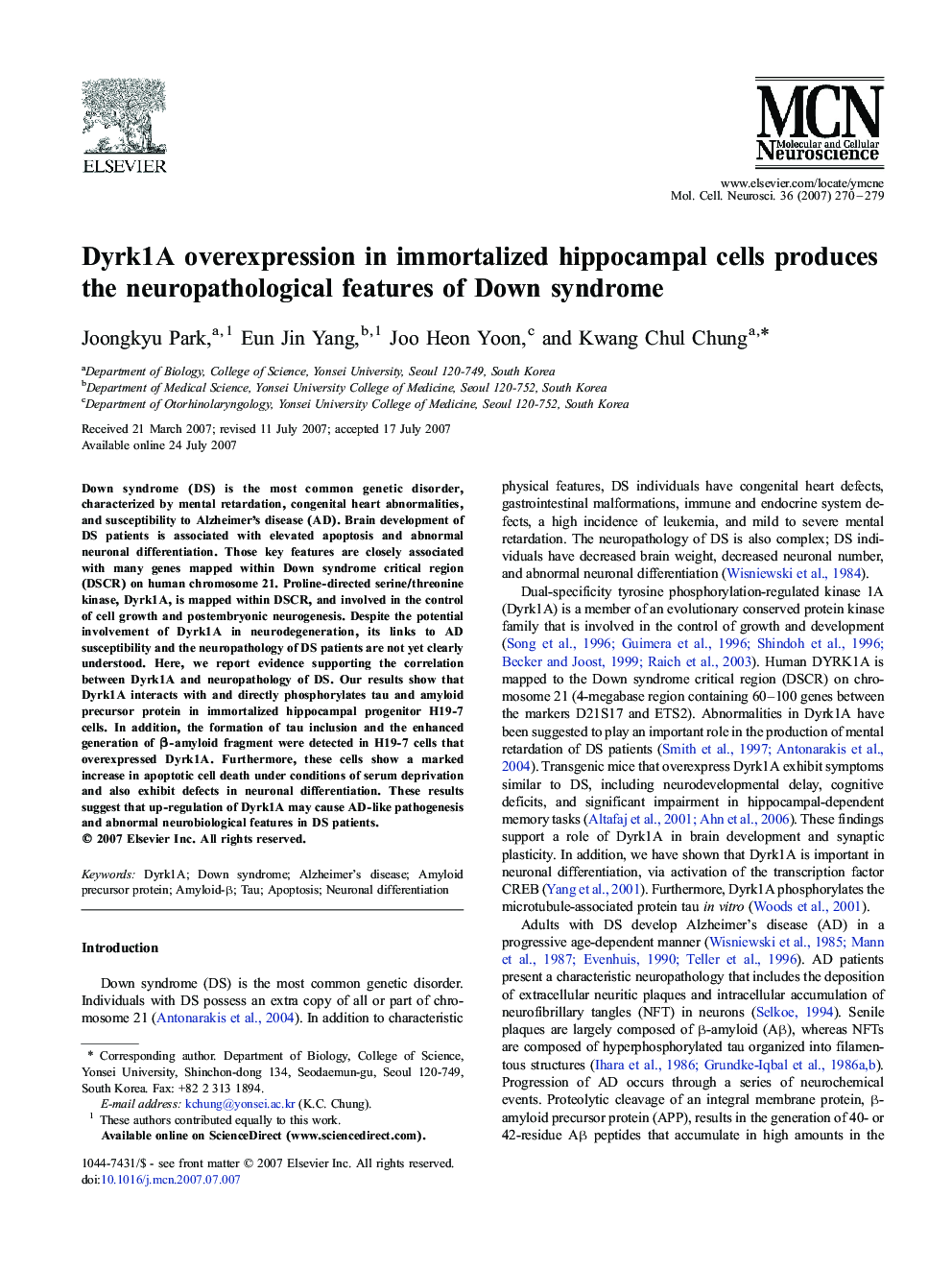| Article ID | Journal | Published Year | Pages | File Type |
|---|---|---|---|---|
| 2199212 | Molecular and Cellular Neuroscience | 2007 | 10 Pages |
Down syndrome (DS) is the most common genetic disorder, characterized by mental retardation, congenital heart abnormalities, and susceptibility to Alzheimer's disease (AD). Brain development of DS patients is associated with elevated apoptosis and abnormal neuronal differentiation. Those key features are closely associated with many genes mapped within Down syndrome critical region (DSCR) on human chromosome 21. Proline-directed serine/threonine kinase, Dyrk1A, is mapped within DSCR, and involved in the control of cell growth and postembryonic neurogenesis. Despite the potential involvement of Dyrk1A in neurodegeneration, its links to AD susceptibility and the neuropathology of DS patients are not yet clearly understood. Here, we report evidence supporting the correlation between Dyrk1A and neuropathology of DS. Our results show that Dyrk1A interacts with and directly phosphorylates tau and amyloid precursor protein in immortalized hippocampal progenitor H19-7 cells. In addition, the formation of tau inclusion and the enhanced generation of β-amyloid fragment were detected in H19-7 cells that overexpressed Dyrk1A. Furthermore, these cells show a marked increase in apoptotic cell death under conditions of serum deprivation and also exhibit defects in neuronal differentiation. These results suggest that up-regulation of Dyrk1A may cause AD-like pathogenesis and abnormal neurobiological features in DS patients.
